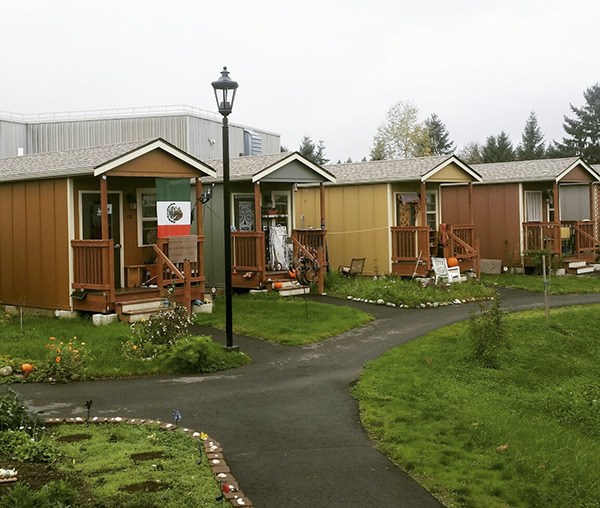The official numbers haven’t been released, but early review of 2016 Point-in-Time Count surveys indicate the number of homeless in Clallam County has risen.
“Right now it seems we’ve seen an increase in homelessness,“ Kevin Harkins, Serenity House of Clallam County operations manager, said.
Required statewide by the Homelessness Housing and Assistance Act, the Point-in-Time Counts allows each county to gain a snap shot in time of the number of homeless persons living within their borders.
Locally, Harkins coordinates the annual count where a collage of agencies and volunteers physically go out into the county and count sheltered and unsheltered homeless persons.
This year, on Jan. 28, about 50 volunteers and 10 agencies participated in the count, Harkins said.
Following the count, each survey is entered into a database where officials with the Washington State Department of Commerce can review and finalize the data to create an annual report. The 2015 Point-in-Time Count report reflects a total of 176 homeless persons within Clallam County. Of the 176 counted, 41 were unsheltered.
The process of finalizing the data can take months, but Kim Leach, Serenity House of Clallam County executive director, is hopeful they’ll have the official numbers back sooner than last year, which took about six months, she said.
Tiny houses
To develop and implement ways to address homelessness and continue to work toward the overarching goal to end it, a diverse group of local stakeholders gather monthly. The Shelter Network Providers of Clallam County is comprised of a long list of local and state agencies, tribes, churches and individuals that provide housing and supportive services to homeless individuals, families and at-risk households.
Patrick O’Brien, a Serenity House volunteer and Shelter Network Providers participant, is looking to tiny houses as an avenue to reduce the number of homeless persons.
O’Brien pitched the concept of tiny houses to about 30 people attending the last Shelter Network Providers meeting on Feb. 17.
“The houses are pretty simple and cheap to build,” he said.
Using boat trailers as a base, O’Brien said, the houses would be about 120 square feet and would be considered mobile. Being mobile allows for more regulatory flexibility, he said.
A home, even a tiny one, can provide someone who’s homeless a sense of pride, security and a place to get cleaned up so they can pursue work, O’Brien said.
To start with, O’Brien envisions constructing 15 houses and “working up,” with hopes of getting the tenants involved.
“I want to see sweat equity in these houses,” he said.
Acknowledging a tiny house community would need oversight, O’Brien is willing to police the area.
However, O’Brien can’t turn his understanding of tiny houses and the potential they provide into a reality alone.
“I need help,” he said, noting he’s in his 70s and although still capable, realizes he has limitations.
Additionally, O’Brien needs to identify funding sources and one of his biggest challenges is finding a location.
“My problem has come down to land,” he said.
Although there’s plenty of space available, he said, the challenge is finding the right place, that’s affordable and won’t cause community pushback.
To avoid potential conflict in residential areas, Rich James, Clallam County transportation program manager, suggested O’Brien look into industrial and commercial lots. James also noted the importance of needing to manage and disperse the number of houses to maintain organization.
As for potential partnerships, O’Brien is looking at Serenity House, but before any involvement on its part there needs to be a plan for “supportive services,” Leach said.
“What we won’t get involved with is a tiny home community that doesn’t have supportive services,” she said. “You need supportive, ongoing services to maintain function of a community.”
Given O’Brien’s interest to pursue a tiny house project and the associated challenges and unknowns with doing so, Martha Ireland, Shelter Providers Network coordinator and Serenity House executive coordinator, suggested a committee form in order to strategically move the effort ahead.
To contact the Shelter Network Providers, call 425-7224 ext. 307 or e-mail shelterprovidersnetwork@gmail.com.



